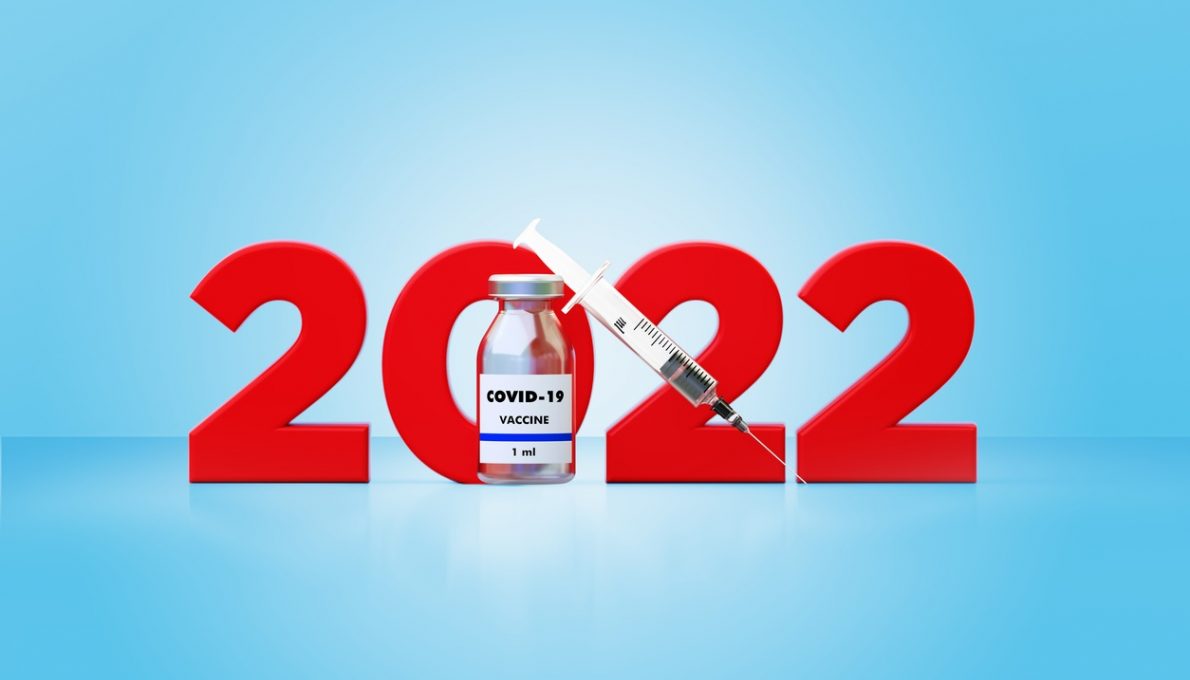New York, N.Y., January 13, 2022–As we begin 2022, we have headwinds as the COVID-19 pandemic has affected how we live. There have been more than 5.4 million deaths globally with over 835,000 deaths in the United States alone, the highest known deaths of any country.
While we are getting tired of this threat to our way of living, how we operate our business, and the economic prospects globally, we are beginning to wonder what the future may look like. Hospitals are overwhelmed, schools are going back to remote learning and many in business remain uncertain on the path to post-pandemic normal.
Experts are now suggesting new ways of addressing the pandemic. In a statement on December 14, 2021, the WHO Director General Dr. Tedros Adhanom Ghebreyesus offered ideas last month: “I need to be very clear: vaccines alone will not get any country out of this crisis. Countries can and must prevent the spread of Omicron with measures that work today. It’s not vaccines instead of masks, it’s not vaccines instead of distancing, it’s not vaccines instead of ventilation or hand hygiene. Do it all. Do it consistently. Do it well.”
Similarly, in the U.S. in January, former U.S. government officials and medical leaders, including those on President Biden’s COVID advisory board have suggested that we need a new approach so that we are not stuck in “a perpetual state of emergency.” These experts suggest that to be prepared for future outbreaks and pandemics, the administration must set goals and specific benchmarks, including what number of hospitalizations and deaths should trigger emergency measures.
As the global response and approach in the U.S. wavers and the U.S. Supreme Court confirms the appropriate role of the federal government to mandate vaccination for workplace safety and health care measures for up to 100 million American workers, we can nonetheless address COVID with business ingenuity and resilience. At Business Partners to CONVINCE, our steering team partner SHRM—the Society for Human Resource management—released a recent survey of business leaders on COVID-19 and the workplace, which confirmed that eighty-seven percent of business leaders believe their organization would be able to endure an outbreak of the omicron variant of COVID-19.
Even in the face of this Omicron surge and the confusion, some facts are clear – getting vaccinated or boosted will help prevent further hospitalizations and death. There are very few cases of vaccinated individuals being hospitalized or dying due to the virus. Over 1.1 million lives in the U.S. alone are estimated to have been saved before this winter surge began thanks to the COVID-19 vaccines. For example, In New York City, one of the first cities to experience the Omicron spike, unvaccinated people are currently thirty-times more likely to contract or be hospitalized, and more than forty-times more likely to die from COVID.
Even with vaccination, we need to continue to utilize testing, wear high-quality masks, social distance, increase ventilation and avoid congregating in crowds, which requires all of us to work together to stay safe and to hasten the end of the pandemic. We have issued the BP2C Workplace Challenge, supporting efforts for employers with resources, information, and approaches for preventing the spread of COVID including vaccination. We also have partnerships with our networks—the International Organization of Employers (IOE), the International Chamber of Commerce (ICC), Business at OECD, and others such as SHRM, Business Fights Poverty, NFID, and WiltonPark.
While there may be a long list of policy failures which has gotten us to this point nearly two years into the pandemic, we can normalize testing at home, work, school and for travel. The fact is testing, and tracing of cases, must be a daily routine until this crisis has passed.
We also can be prudent and follow the isolation and quarantine guidelines from the CDC that are designed to be used in a way that prioritizes people’s health and safety and allows them to take care of themselves, their families, and anyone who depends on their care. While people who have COVID-19 may leave the home after 5 days if they are asymptomatic, or have improving symptoms and wear a good mask, it’s also safer if they get a negative test first.
Additionally, for those living in the USA, as of January 19, the Administration has opened a website for free at-home testing kits available for free delivery in the ensuing weeks while Omicron rages.
Globally, we should advance trustworthy multisectoral approaches with vaccination and other measures to stem COVID. We can be in line with the Director General of the WHO: “Do it all. Do it consistently. Do it well.”
Clearly, all of us in the private sector would like to see the global response succeed. Business ingenuity, innovation, and leadership – our networks, communication prowess and willingness to engage – are all hallmarks of success.
We look forward to 2022 as the year in which we really are moving to a new “normal” and one in which we feel confident in how we can live.
Recent articles featuring Dr. Scott Ratzan:
Vox: The Most Consistently Botched Part of the US Pandemic Response
